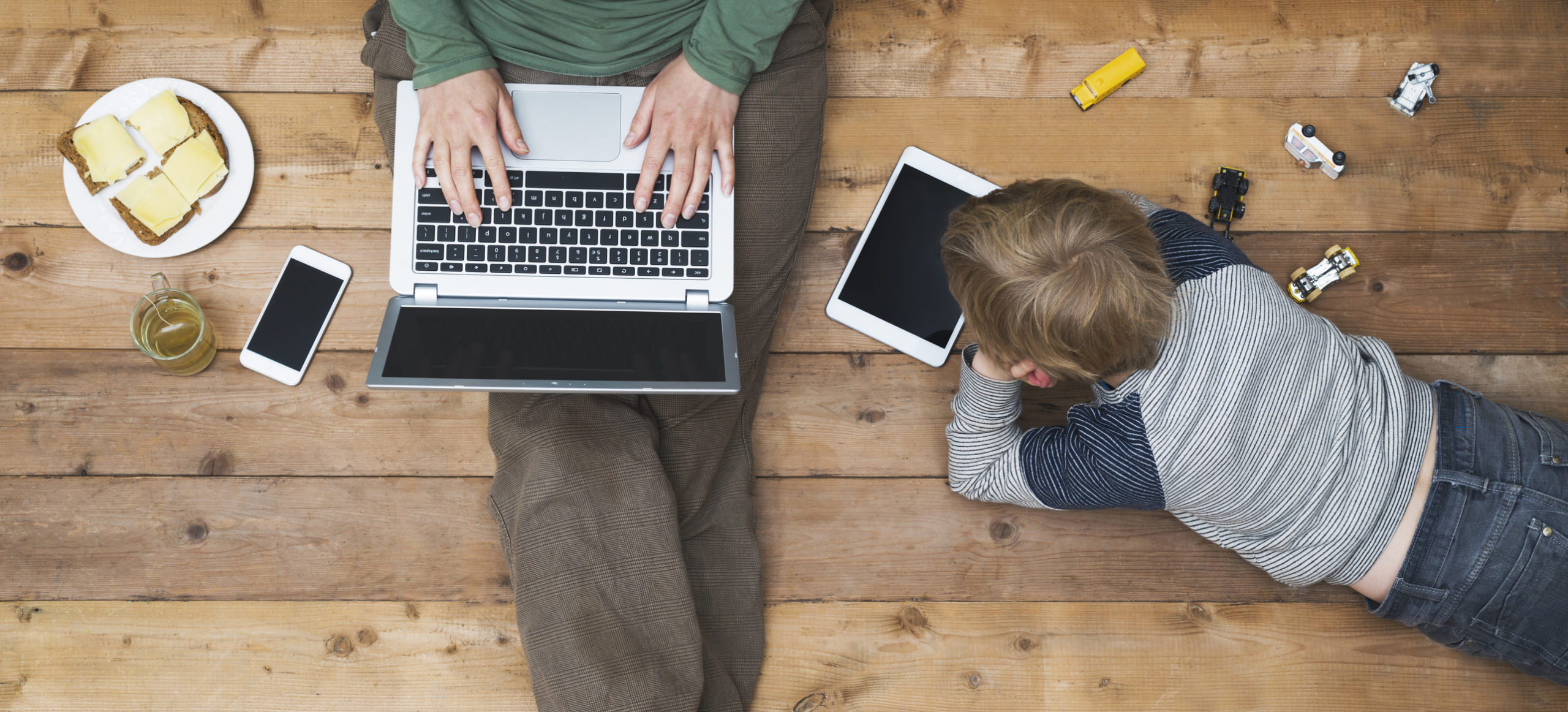
3 Ways to Model Positive Social Media Behavior
From a very young age your child’s eyes are always on you, so it’s important to model positive social media behavior. They’re interested in everything you do, and eventually they’ll want to mimic your actions, too. If you’re spending a lot of time on social media or with your face buried in your phone, it’s only a matter of time before your child picks up on that.
These days kids are participating in social media at ages younger than ever. While your toddler might not have a Facebook profile, about 56% of youths in the U.S. have at least one social media account by the time they are 12 years old. Knowing how soon your child may have a presence on social media, it’s really important to implement and model healthy habits now.
But serving as a role model will probably require examining some of your own behaviors with social media. In order to show them what a healthy relationship with social media looks like, here are three simple things you can do today.

1. Set Aside Social Media for Family Time
One of the best things you can do to demonstrate a healthy relationship with social media is to
spend time away from it. Taking breaks, especially during family time, will help your child understand your priorities and can influence their own down the road. Plus, stepping away for a while has other benefits to consider. Even a 24-hour “digital detox” can improve your mood and make it easier to focus on the moment. Detoxing for longer periods can help you to stop feeling competitive and make it easier to stop comparing yourself with others. Those are both important lessons to pass on to your little one.
2. Limit What You Share
Social media is all about sharing, which makes it a great way to stay connected with family and
friends. But there’s something to be said for keeping certain aspects of your family life private.
Oversharing on social media can not only compromise that privacy, but it could eventually cross
some boundaries. Maybe your child doesn’t want to look back 10 years from now to find that
you posted an embarrassing photo of them as a baby.
While you don’t have to stop sharing completely, take the time to pause before you post. If you use social media as a way to preserve special moments and memories, consider finding other options, including photo albums, scrapbooking, or making home videos. These are things you can keep to yourself or share with your immediate family members rather than your 1,000 Facebook friends.
3. Keep Things Open
One day, your child is going to want a social media account. It might not be on the same platform you use, but it will happen. The patterns and behaviors you’ve modeled will highly influence their own behaviors once they’re allowed to have an account. So a good rule of thumb is to be open about what you’re doing on social media. If your child asks questions, answer them honestly. Let them know what you’re sharing and show them how different platforms work. By working to create a healthy and open relationship between your child and social media now, they’ll be more likely to maintain those habits when they’re using it on their own.

The bottom line is social media is a part of life and it’s nearly impossible to avoid. With different platforms popping up all the time the way your child uses social media in the future might be completely different than how you use it now, however, the same general principles still apply. Adjust your social media behaviors as needed to set a positive example for your child, and they’ll be more likely to be responsible and safe when they start to use it themselves.



